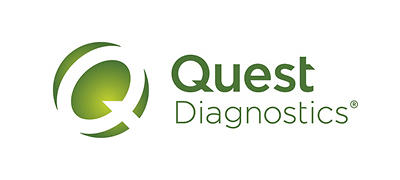read time: 3 minutes
Population Health
For improving the health of communities, goodwill is a start, but it takes more than that—it takes extensive assessment of community health needs, careful planning to make sure programs are aligned with community priorities, and execution of a program that includes measuring results and gathering feedback.
The Quest Diagnostics Foundation undertook this 3-stage approach—assess, plan, and launch—in building programs that promote community health in partnership with nonprofit community organizations across the country. Bonnie Reyna, DrPH, National Director at Quest, spoke recently at the American College of Healthcare Executives 2023 Congress on Healthcare Leadership, where she described the program, along with Debra Fraser-Howze, MPA, founder of Choose Healthy Life, one of the organizations that collaborated with the Foundation.
“Health inequities have existed for decades,” with higher rates of heart disease, hypertension, and diabetes among minority communities, “but recent years have highlighted and exacerbated them,” Dr Reyna said. “In many ways, the US healthcare system has failed racial and ethnic minorities, and populations with low socioeconomic status,” and that has led to significant distrust of the healthcare system and healthcare providers within minority communities.
A collaborative strategy
In 2020, Quest pledged $100 million to improving community health and launched grant programs to help remove barriers communities experience when accessing healthcare, with a focus on testing, screening, and diagnosis.
The Foundation seeks to collaborate with local stakeholders to support community-led initiatives that address social drivers of health in 6 priority cities across the US: Chicago, Baltimore, Boston, Houston, Los Angeles, and Miami. Among the Foundation's focus is funding grants to community-based groups and providing organizational support to deliver the most effective programs.
The strategy comprises 3 key steps that ensure alignment with local needs. During assessment, the team collaborates with partners in the community, including nonprofits, coalitions, healthcare providers, and others to identify needs specific to the community. During planning, proposals for supported programs are reviewed and evaluated, and clear benchmarks are established that will eventually measure the success of the program. The Foundation can also amplify the impact in the community by leveraging the value of testing through Quest as part of the program. Then the program is launched, and at appropriate intervals, is evaluated to determine areas of success and opportunity and the potential for expansion of the program.
Choose Healthy Life: A case study in partnering with the community
“The success of the Foundation has hinged on building meaningful partnerships with trusted community leaders and organizations,” Dr Reyna said. One such organization is Choose Healthy Life, a network of Black churches committed to improving access to healthcare through community-based action.
Formed in response to the COVID-19 pandemic, the network hosted over 1,000 testing events and 1,000 vaccination events, said Ms Fraser-Howze, and has now pivoted focus more broadly on wellness within the Black community. “It is time for us to confront the underlying health disparities that contributed to excess deaths from COVID-19 and which remain the silent killers that haunt our community.”
Central to that mission is the Choose Healthy Life Blueprint for Wellness, a screening tool that provides a clinical set of laboratory tests and measurements that are completed to give individuals a clear picture of their overall health so they can act on specific risk areas, including hypertension, diabetes risk, and heart health. Screenings are offered at Choose Healthy Life church events, Quest Patient Service Centers, and local healthcare centers.
Dr Reyna urged healthcare executives who are hoping to build similar institution-community partnerships to improve clinical and community health outcomes to “focus your impact and avoid aiming too broadly; be deliberate and intentional with community engagement, rather than rushing; and build internal processes to ensure efficiency and productivity.”
Ms Fraser-Howze stressed the importance of “anticipating the need to adapt to an evolving landscape” and planning accordingly, “addressing the gaps and concerns that arise collectively, and celebrate your successes along the way.”






